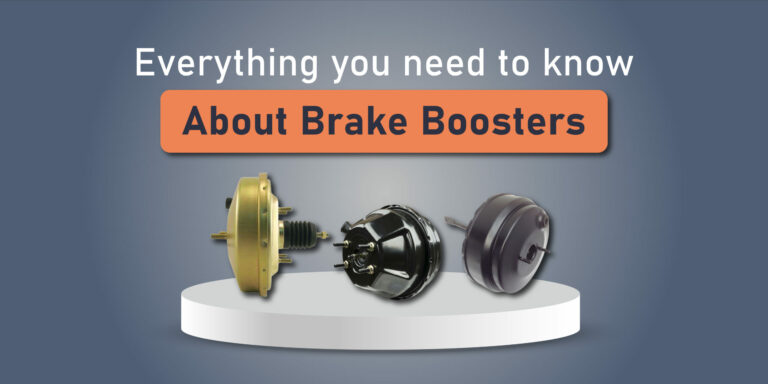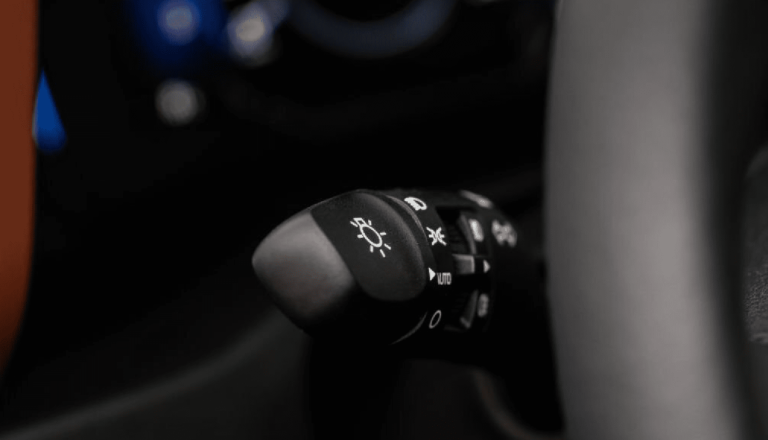
Fuel injection and carburettors both provide the air-fuel mixture to the engine. Carburettors mix the air-fuel in the required ratio, and supply it to the intake manifold. While a fuel injection system sprays fuel directly into the combustion chamber which mixes with air from the intake valve. Due to these different mechanisms, the amount of fuel supply differs with each system. Still, the question remains, which one is better? Fuel injection or carburettor.

With rising pollution levels, emission standards are becoming increasingly strict. Emission norms are forcing automobiles to provide accurate fuelling. Affordable carburettor systems are being replaced with expensive but precise fuel injection systems. However, what are the main differences between fuel injection and carburettors? Let’s have a closer look.
With the invention of the internal combustion engine, automobile engineers have constantly endeavoured to find the best way to provide an air fuel mixture to the combustion chamber. A device is required to mix the incoming air with fuel in the right ratio for effective combustion. A carburettor and fuel injector both serve this purpose. So, what is the difference between them?
A carburettor delivers the air-fuel mixture to the combustion chamber using mechanical parts like the fuel float chamber and the throttle venturi along with fuel jets that spray fuel and mix it with incoming air. A fuel injection system also delivers an air-fuel mixture in the right ratio but it makes use of sensors, electronics and not mechanical parts.
The primary purpose of the carburettor is to mix fuel and air in the right ratio and feed it to the combustion chamber. When the throttle of the vehicle is opened, it increases the air flow through the carburettor and causes fuel to enter the chamber by the venturi effect. As the air flow is increased, it causes suction of air and the delivery of fuel results in increased acceleration of the vehicle.
Fuel Injection Systems
Fuel injection system consists of electronic sensors and a fuel pump. The system makes use of the fuel pump to deliver fuel to the combustion chamber. The fuel pump can be found inside the fuel tank of the vehicle. Fuel supply to the combustion chamber is governed by the ECU or Electronic Control Unit. The ECU constantly monitors the fuel supply and makes precise changes based on complex calculations to provide the air fuel mixture in the right ratio.
Several parameters are taken into account by the ECU including the throttle position, engine speed, engine temperature, engine load, etc. The fuel injection nozzle is located directly in the combustion chamber of the cylinder. The ECU controls the precise amount of fuel that is sprayed into the combustion chamber.
The advantages of fuel injection systems are a more accurate air-fuel mixture ratio for a given driving condition. It also provides a cleaner and more efficient combustion. Throttle responses are quicker with fuel injection systems. Fuel economy is much better. They are also less prone to damage and maintenance free. Fuel injection systems can also be tuned easily with the ECU.
Fuel injection systems also have some disadvantages. They are expensive as compared to conventional carburettors. Tuning the fuel injection systems is a little complex through ECU mapping and requires the work of an experienced technician. Repairs to the fuel injection system can be quite costly. And if the ECU fails, the vehicle could be left stranded.
Carburettors are slowly being phased out because they cause more pollution as compared to a fuel injection system. In this way the fuel injection system is more versatile and is seen increasingly more often in newer vehicles. With fuel injection systems, the ECU is constantly making complex calculations to provide the best air-fuel ratio for the best performance given the driving conditions. Carburettors often struggle to match the ever-changing needs of the performance levels. Fuel injection systems provide a more accurate measurement of fuel and air resulting in higher performance leading to better fuel management and economy. The ECU can be adjusted for higher performance levels as needed. In terms of maintenance, the carburettor is better because it can be easily repaired or replaced whereas fuel injection systems require the help of skilled technicians which leads to a higher cost.
Also Read: What is an emission control system? Different types and how they work
What is a fuel pump?
The fuel pump in a fuel injection system draws fuel out of the fuel tank and provides it to the fuel injectors. The pump maybe mechanical or electronic, in which case it can be located next to or even inside the fuel tank.
A mechanical fuel pump is driven by a camshaft that rotates under the power of the engine’s crankshaft. A suction force is provided by the diaphragm in the pump which pulls fuel from the tank to the fuel injectors. It contains check valves that prevent the fuel from draining back into the tank.
An electric pump does not use a camshaft, instead it uses a solenoid (electromagnetic switch) to provide fuel pressure. The pressure provided by the electronic pump is quite high as compared to a mechanical fuel pump. The fuel delivery and parameters like pressure can be more closely monitored by the ECU.
Electronic fuel pumps are more reliable than mechanical fuel pumps. They provide an improved fuel delivery system. These types of pumps are also safer to use and provide a higher flow rate which is required by the fuel injectors.
In a diesel engine, the fuel injectors atomize fuel at a very high pressure. The throttle governs the amount of diesel being atomized in the combustion chamber. Depressing the throttle will increase the amount of fuel being sprayed, resulting in increased acceleration. Unlike a petrol engine, the diesel engine does not make use of a spark plug to ignite the air-fuel mixture. The air-fuel mixture is ignited when the pressure increases during the compression stroke of the diesel engine. The temperature also rises with the pressure during this stroke.
Types of fuel pumps
There are 3 kinds of fuel pumps used in diesel engines; individual inline pump, distributor type pump and continuous type pump.
The individual inline pump is a mechanism with an individual fuel delivery system. Each injector is served by a plunger mechanism. The number of plungers is equal to the number of injectors. All the plungers are placed inline in one pump. It has a camshaft with the number of cams equal to the number of plungers. The plungers are used to increase fuel pressure. It also contains a fuel barrel, a small space where fuel is sent to the injector.
The next type of pump is known as the distributor type pump. It requires a smaller space and is designed for applications where space is limited. It uses a single plunger for all the injectors. The plunger presses the fuel in the fuel chamber to increase its pressure. Even with a smaller design, this kind of pump does not produce high pressure, therefore it is not used in high-capacity diesel engines.
The last kind of pump is known as a continuous pump. It is the kind that is most widely used today and is used for the common direct injection systems. This pump is the smallest size of all the pumps discussed here. The pressure generated from this pump is very high. This pump works like a water pump that uses a turbine. The pump holds the fuel pressure at the required limit.
Carburettors mix a definite ratio of air and fuel for all driving conditions. There are no dynamic ratio adjustments in the case of a carburettor. In fuel injection systems, the ECU is constantly making changes to the air-fuel mixture ratio based on information received from sensors. As a result, fuel economy and management are much better in a fuel injection system. Fuel efficiency is much higher in a fuel injected motorcycle or car. Working of a carburettor.
In a carburettor, the fuel delivery is regulated by the velocity of air passing over the venturi of the throttle. As the throttle is opened, the velocity of air increases and as a result more fuel is delivered for the air fuel mixture that enters the combustion chamber. The part which restricts the fuel is known as the venturi. The fuel is drawn into the combustion chamber by means of the vacuum venturi effect.
There are advantages to the carburettor system as well. Carburettors are not expensive and repairs on them can easily be carried out. The vehicle user can tune the carburettor for more power or more fuel economy. They are made from lightweight materials and are generally long lasting and reliable. They are located separately from the engine hence they can be removed or serviced without impacting the engine.
Some of the disadvantages of the carburettor system are as follows. They are not as fuel efficient as fuel injection systems. As the throttle is opened for increased acceleration, there is a certain amount of lag therefore delaying the throttle response. Carburettors are prone to general wear and tear which requires the components to be replaced. They cannot provide dynamic air-fuel mixture ratios and have to be tuned beforehand for certain driving applications that require more power or greater fuel efficiency. There is a possibility of dirt and dust entering the carburettor resulting in blockages in the carburettor chambers. Also, certain components are quite delicate and are prone to damage.
The working principle of a carburettor consists of pressure drops through the throttle venturi and uses Bernoulli’s principle that states liquids always move from a high-pressure area to a low-pressure area. As air flows through the venturi, the area becomes smaller and the air accelerates to the other side of the venturi. Main jet and pilot jet are two tubes that run from the float chamber (that is filled with fuel) to the air chamber. The pressure drop in the venturi causes fuel to be sucked from its high-pressure area through the jet and it sprays into the air chamber.
Carburettors also have a choke for when the engine is started cold. The air fuel mixture has to be richer to allow the engine to keep running in this condition. When the choke is enabled, it reduces the amount of incoming air and the suction created by the pressure drop allows for a rich air-fuel mixture to be supplied to the engine. There are different types of carburettors depending on the direction in which the mixture is supplied. Up-draft carburettors, horizontal type carburettors and down-draft carburettors.
In an up-draft carburettor, the air is supplied from the bottom of the mixing chamber. In a horizontal type carburettor, the air is supplied from one side of the carburettor. In down-draft type carburettors the air is supplied from above the mixing chamber. Generally, a down-draft type carburettor is used because of the following advantages. The flow of the mixture is due to gravity and this lets the engine work at low speeds under load. The engine can obtain a higher volumetric efficiency. And the carburettor can be located in an easily accessible position. The only disadvantage for this type of carburettor is that there is a possibility of fuel entering the inlet manifold if the float is defective or the jet is overflowing.
Carburettors are used only in petrol engines where spark ignition happens. Diesel engines make use of the fuel injection system and require a fuel pump and fuel injectors.
Conclusion
When internal combustion engines were first conceived, they used a totally different air fuel mixture delivery method. The internal combustion engine of the early years used a fuel drip system. Although this worked, it wasted fuel and resulted in poor fuel economy.
Fuel injection is fast overtaking carburettor systems. Almost every new vehicle today comes with fuel injection because of the advantages of higher power, better fuel economy and easier maintenance. So as the older generation still swears by the tunability, serviceability of carburettor systems, newer drivers say that fuel injection is better in every way.
The only parameter where a carburettor proves better than fuel injection is that carburettors are simple to clean and rebuild. A fuel injection system needs the intervention of a technician because they are more complex and use sensitive electronic sensors and components.
Which is better? Fuel injection or carburettor technology. When it comes to performance, fuel injection is the superior technology. Fuel injection also provides better fuel economy and throttle response. But fuel injection systems are costly as compared to carburettors. However, old school enthusiasts swear by carburettors because they can fiddle around with it to obtain the desired performance level.








